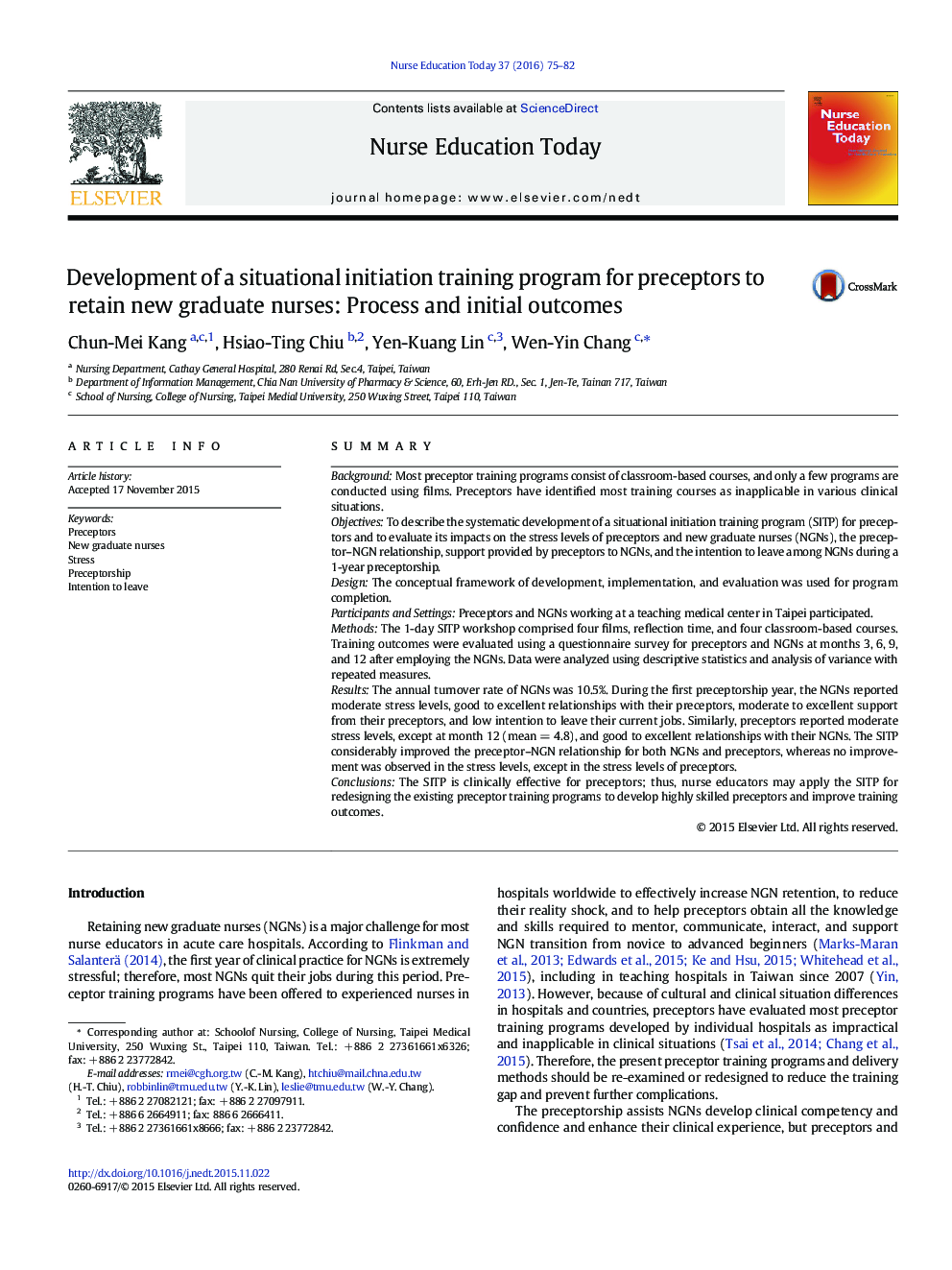| Article ID | Journal | Published Year | Pages | File Type |
|---|---|---|---|---|
| 368005 | Nurse Education Today | 2016 | 8 Pages |
•The situational initiation training program improved preceptors' understanding and building good relationships with the new graduate nurses.•Training preceptors through films results in a low intention to leave among new graduate nurses during their first year of employment.•Through the situational initiation training program, new graduate nurses received strong support from their preceptors during preceptorship.
SummaryBackgroundMost preceptor training programs consist of classroom-based courses, and only a few programs are conducted using films. Preceptors have identified most training courses as inapplicable in various clinical situations.ObjectivesTo describe the systematic development of a situational initiation training program (SITP) for preceptors and to evaluate its impacts on the stress levels of preceptors and new graduate nurses (NGNs), the preceptor–NGN relationship, support provided by preceptors to NGNs, and the intention to leave among NGNs during a 1-year preceptorship.DesignThe conceptual framework of development, implementation, and evaluation was used for program completion.Participants and SettingsPreceptors and NGNs working at a teaching medical center in Taipei participated.MethodsThe 1-day SITP workshop comprised four films, reflection time, and four classroom-based courses. Training outcomes were evaluated using a questionnaire survey for preceptors and NGNs at months 3, 6, 9, and 12 after employing the NGNs. Data were analyzed using descriptive statistics and analysis of variance with repeated measures.ResultsThe annual turnover rate of NGNs was 10.5%. During the first preceptorship year, the NGNs reported moderate stress levels, good to excellent relationships with their preceptors, moderate to excellent support from their preceptors, and low intention to leave their current jobs. Similarly, preceptors reported moderate stress levels, except at month 12 (mean = 4.8), and good to excellent relationships with their NGNs. The SITP considerably improved the preceptor–NGN relationship for both NGNs and preceptors, whereas no improvement was observed in the stress levels, except in the stress levels of preceptors.ConclusionsThe SITP is clinically effective for preceptors; thus, nurse educators may apply the SITP for redesigning the existing preceptor training programs to develop highly skilled preceptors and improve training outcomes.
